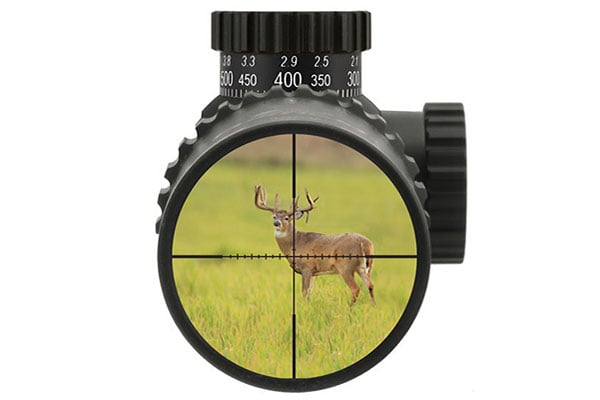
Last Updated on
I hate to keep bringing up the old days but it is true. Food tasted better, people had manners and didn’t dress like bums (even the actual bums) and everything cost a nickel. Rifle scopes were also much simpler affairs with fixed magnification and a plain crosshair, plus every shot was guaranteed to hit dead center. Modern scopes on the other hand are ridiculously complicated affairs that come with an astrophysics manual printed in microscopic font.
However we must embrace the modern world and these new rifles scopes offer features that can make long range shooting a much easier and more accurate affair. To start one must grasp the difference between MOA (Minute of Angle) and Mil-Dot reticles and adjustments.
MOA Explained
Minute of Angle (MOA) refers to the degrees in a circle (360 in case anyone forgot) and each degree has 60 Minutes. As you move farther away from the point of origin the angle gets larger. Think of it like a slice of pie, as you get closer to the crust from the center the slice gets wider. At 100 yards one MOA measures 1.047 inches. There is a bunch of math that explains it but I don’t need to know how the sausage is made in order to enjoy a good breakfast, plus there will be plenty of maths further on.
The turrets on your scope that you use to sight in your rifle are almost always measured in quarter MOA so that one click of turning moves the reticle about .25 inches right or left, up or down at 100 yards. If you are shooting at a target that is 200 yards away one click moves the reticle .5 inches and if you are shooting at a target 50 yards away one click moves it .125 (or one eighth) inches. You get the picture; math.
Some red dot or holographic optics will tell you the size of their dot in MOA. The EOTECH 512 Holographic Weapon Sight has a one MOA dot inside a 68 MOA circle. This could be used for range estimation as well. For example a 5 foot 8 inch man would stand edge to edge inside the circle at 100 yards and only from the center dot to the circle edge at 200 yards.
Some scopes have both an MOA reticle with internal hash marks and MOA turret adjustment. A good example is the BURRIS C4 3-9×40 Rifle Scope, C4 Wind MOA Reticle. This keeps things simple as the hash marks and the turret adjustment match. This is the standard American measuring system we all know and love and also how we measure shot group sizes so it makes sense.
Mil-Dot Explained
I hope you like metric ‘cause there is going to be lots of metric from this point forward. A Mil-Dot is based on Radians of which there are 6.28 in a circle. There are 1,000 Mils in one Radian. If you convert one Mil-Dot to our system it measures 3.6 inches at 100 yards and 3.6 feet at 1,000 yards. There are 3.44 Mils in one MOA. This system was designed specifically for range estimation for artillery and long distance rifle use as a quick and easy way to hit your target. Inside your Mil-Dot reticle there will be hash marks set at one mill distance like this WEAVER Tactical 3-15×50 SF Rifle Scope, Mil Dot Reticle. Others will also include intermediate hash marks at the half Mil-Dot point. You can also measure the size of the dots in mils and end to end for greater precision.
Of course Mil-Dots are based on the metric system and here is where things start to get hairy. Most optics that have Mil-Dot reticles have MOA turret adjustment. I have no idea why this is, maybe because the scope manufacturers are in league with the math industry. So if this is your set up you are going to need to do some quick math in your head or if you have pen, paper and a calculator handy here is the formula.
To determine distance to the target (assuming you have an idea of the size of the target) use this formula:
American System:
(Distance in yards) = 1000 / 36 (or 27.7) x (Object size in inches) / Mils
Metric System:
Distance in kilometers = Size in meters / Mils
For example a 6 foot tall man that measured 3 Mil-Dots would be almost 665 yards away. Obviously you will almost never know the exact size of the target in inches, you will be guessing. However this is also where the Mil-Dots help. If you can see where your shot hit you can measure the distance from the hit to the target in Mils and adjust accordingly. You can also use the Mil-Dots to adjust for windage and bullet drop.
So now to hit your target you can hold over in Mil-Dots or adjust your reticle. You also need to calculate your bullet drop which depends on your ammunition but that is a topic for another article. If you shoot and see that the bullet hit 2 Mils low you have to convert the Mils to MOA in order to make the adjustments on your scope (remember one MOA is 3.44 Mills). Unless you need to know exactly I suggest rounding and simply multiplying 3.5 by the Mils you need to get the MOA. In this case it is 3.5 x 2 = 7 MOA. Since one MOA is four clicks of your turret that equals 28 clicks to adjust. You could also just hold over the proper distance with no math.
The best way to avoid all of this nonsense is to spend the money and get a Mil-Dot scope where both the reticle and the adjustments are in Mils. The adjustments will be in 1/10 Mil which is about 0.36 inches per click.
Focal plane
Lost yet? You will be soon. Rifle scopes come in first (front) and second (rear) focal planes. If you have a fixed power scope it makes no difference. If you have a variable magnification scope it matters a lot. Most scopes use the rear focal plane. This means that the size of the reticle changes relative to the target as you increase or decrease magnification. The reticle size is actually staying the same but as the target gets larger or smaller because of the magnification changes the crosshairs and any hash marks appear wider (at low magnification) or narrower (at high magnification).
Obviously since the size of the reticle relative to the target changes you can’t use it for measuring distance. To compensate manufacturers set the hash marks on the reticle to be accurate for measuring distance at the highest magnification only. Since you typically only need to measure distance accurately for long range this isn’t much of an issue but it does need to be kept in mind.
Some tactical scopes instead place the reticle at the first or front focal plane. In this case the size of the reticle changes with the magnification so that no matter how much you zoom into the target it takes up the same number of Mils. In this way you can measure the distance at any point in the magnification range.
Cheating
All is fair in love and war. People who shoot long range a lot make themselves a cheat sheet with known sizes and distances. This allows them to make rough estimates in the field quickly. Of course you can also download calculators to your smart phone that will do this for you or you could buy a range finder. If you prefer paper this MILDOT MASTER Analog Calculator offers a simple slide rule device to figure out your distances quickly.

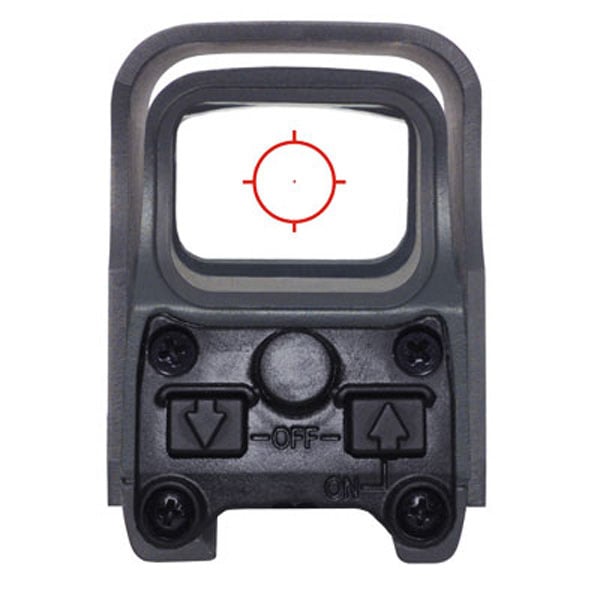
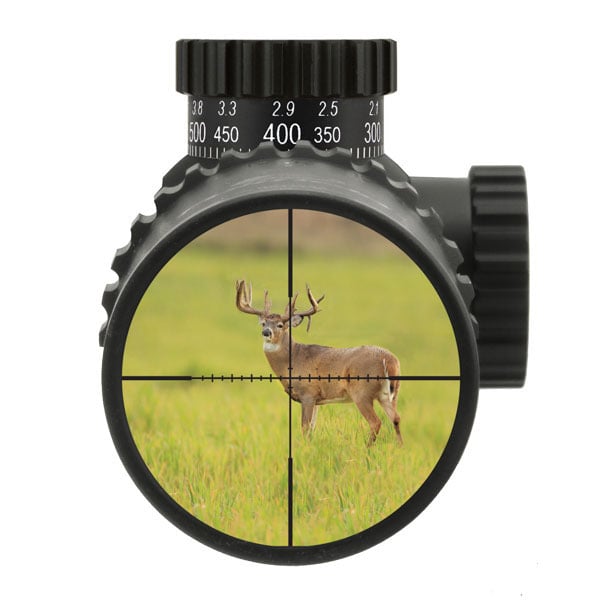
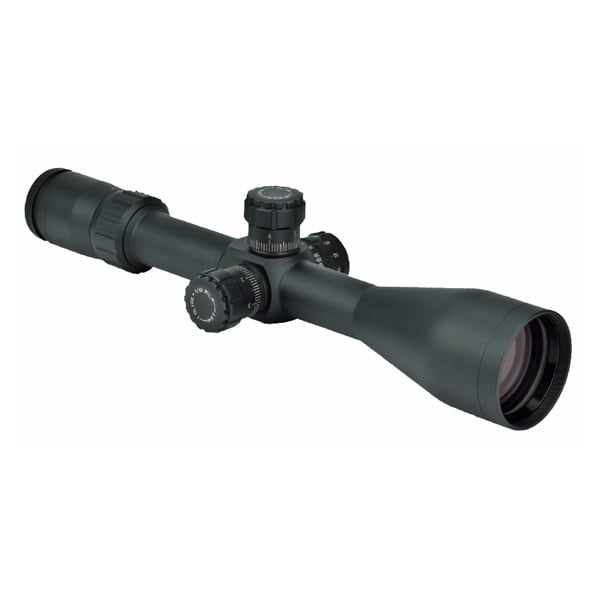
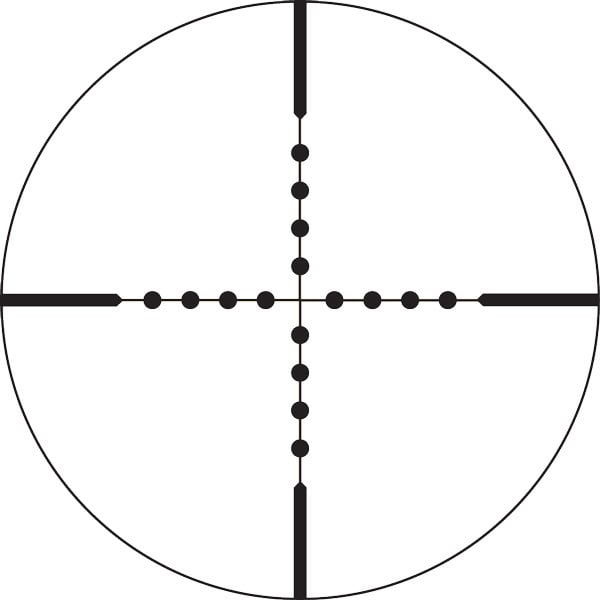
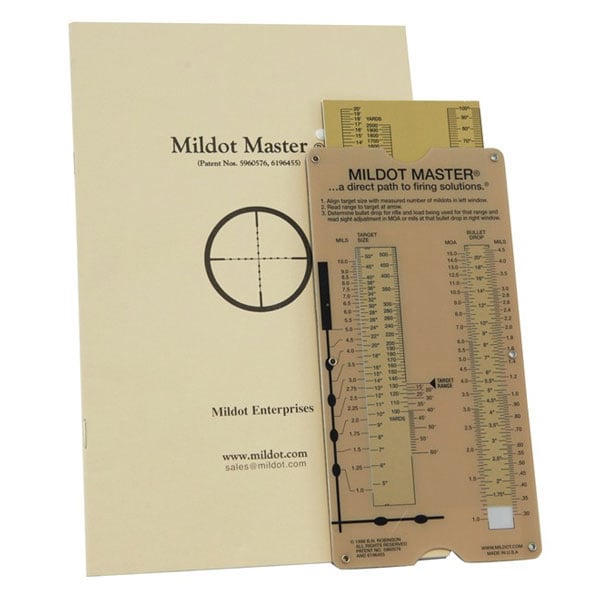



Comments (2)
Reticles: Mil-Dot Versus MOA - Guns N' Tacossays:
September 18, 2015 at 2:24 pm[…] Check out the full article at 1-800-Gunsandammo.com: http://blog.1800gunsandammo.com/reticles-mil-dot-versus-moa/ […]
Dr William Cappssays:
December 13, 2017 at 3:18 pmHelp me here. 1mil is approx. 3.6″ at 100 yards, I do agree. However, at 1000 yards (10x) 1 mil would of necessity be 10x 3.6″ or 36″, which is three feet, not 3.6 feet! Where did this 3.6 feet come from? Certainly not from simple proportional arithmetic, it would certainly seem.
Gritr Sportssays:
December 29, 2017 at 4:27 pmWilliam,
Jorge no longer writes for us, but you’ve got us there! Thanks for your input and reading the blog!